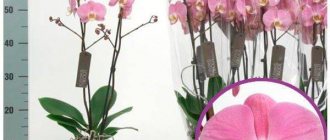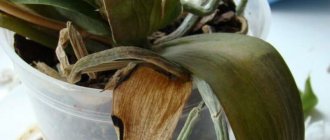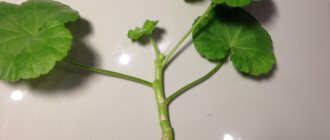Many apartments and offices are decorated with fresh indoor flowers. Moreover, such plantings are so different that it is not easy to create ideal conditions for each of them in one place. Nowadays, window sills have long become not the only place where green favorites gather, so the problem of arranging indoor flowers has not completely disappeared for many housewives. Plants often suffer from improper placement and crowding. In order for these plants to fit harmoniously into the design of the room, feel cozy, develop and grow well, special stands and racks were invented. This solution eliminates the difficulties associated with a lack of free space, provides access to green spaces for watering and caring for them, and also eliminates the risk of accidental overflow of water or soil getting onto interior items. To help determine the best stand for indoor flowers in 2022, the YaNashla editors have prepared a short review, which we invite you to read.
Grow tent Secret Jardin
The Secret Jardin 80 v2 awning is suitable for beginner gardeners. It maintains an ideal microclimate; several small plants can fit inside. The design provides a high level of light and temperature insulation from the external environment, which will help to grow vegetables or fruits all year round.
The inside walls are covered with DuPont Mylar polyester film, they have ventilation sleeves, as well as holes for the lamp and wires. The frame of the grow tent is made of steel and can withstand up to 10 kg of load. Product dimensions - 80 × 80 × 170 cm. The structure can be easily assembled according to the included instructions without tools.
Price: 11,900 rubles.
Buy
How to care for a cactus: description and photo
At home, this flower is quite easy to care for, so even a novice gardener can grow a healthy and lushly flowering plant.
Hatiora is an unpretentious flower . You just need to follow simple growing rules, and the crop will delight the owner with its lush flowering.
Humidity
It is advisable that the air humidity in the room be high. This will have a beneficial effect on the plant, especially during the growing season. If the air is dry, the intensity of flowering may decrease. In this case, it is necessary to take measures for additional hydration.
The plant should be regularly sprayed with a spray bottle or washed under a warm shower . If the weather is too hot, then it is advisable to place a household humidifier next to the flower. You can also additionally immerse the hatiora along with the pot into a container filled with small pebbles or wet expanded clay.
Air temperature
Hatiora, like all succulents, loves warmth. During the growing season and flowering, it is advisable to maintain the temperature at +20-+26 degrees. In summer, the plant can be taken out to an open terrace or balcony.
The culture benefits from differences between day and night temperatures, but only if they do not exceed 5-6 degrees. In winter, the temperature should be reduced to +10 degrees.
Flower feeding
Hatiora needs to be fed throughout the growing season, as well as during flowering. Complex mineral fertilizers, which contain nitrogen, potassium and phosphorus, but lack calcium, are suitable as fertilizing. Should be fed every 2 weeks. During dormancy, the flower should not be fertilized.
How to water correctly: nuances of watering
Watering should be done as the surface of the soil mixture in the pot dries. To do this, you need to use filtered or well-settled water at room temperature. During dormancy, the flower needs to be watered much less frequently - once every 3 weeks.
30 minutes after watering, it is necessary to drain excess water from the pan . If this is not done, then there is a possibility of root rot.
Lighting
Hatiora loves diffused lighting, so the flower should be placed taking into account her preferences. The flower will develop well on a south-eastern or eastern windowsill.
If the plant is located on a southern windowsill, then in the summer it is advisable to shade it during the midday hours to prevent sunburn.
The soil
Like other types of succulents, hatiora grows well in store-bought potting mix intended for cacti. To prepare the substrate yourself, you need to mix:
- 3 parts peat.
- 1 part universal substrate for indoor plants or nutritious leaf soil.
- 2 parts sand or perlite to improve breathability.
If possible, it is worth adding 1 part of pine bark additionally. Under natural conditions, this plant usually grows under trees.
Pruning and crown formation
In order for the plant to develop evenly and the crown to be thick, it is necessary to prune. You need to remove 1-2 outer segments. This stimulates branching.
There is no need to worry that the hatiora will begin to act up. This crop tolerates pruning well .
What time of year should I prune?
The best time is early spring, after the end of the flowering period.
During dormancy, no pruning is carried out.
How to make a bush lush?
In order for the crown to be lush, it is necessary to trim each shoot . They will begin to branch and the flower will quickly become dense.
After pruning, you should feed the plant with complex fertilizer for cacti. This will speed up the formation of green shoots, which will begin to form buds for flowering next year.
Features of caring for the salicoriform variety
Salicorniiforme hatiora is the most common species. This is a small bush that reaches a height of 50 cm. The branches are drooping and have a lignified base. They consist of a large number of segments. The flowers are yellow and bell-shaped.
The culture does not require any special care measures. But the main condition on which the health of the plant will depend is the availability of free space.
Hathiora salicornia quickly increases the length of its shoots and forms a large crown . Also, its shoots are very fragile, so you should move the plant very carefully. And it’s better not to bother him again at all.
For an adult hatiora, you will need to make additional support for the shoots. Branches may break under their own weight.
When growing on a windowsill in summer, create a little shade . This is especially true during the midday hours. Otherwise, the crop may get sunburned.
Yieryi Soil Condition Tester
A tester with a digital display for more precise control of the condition of the soil in which indoor or outdoor plants are planted. The device determines four indicators: humidity and temperature of the earth, acid-base pH and illumination.
Using a 20 cm long probe, it is quite easy to check the indicators in the pot and in the garden bed. The screen is backlit, so you can view measurements at any time of the day. The device runs on a Krona battery, which must be purchased separately.
Price: 870 rubles.
Buy
Why do you need a support for flowers and for what crops is it needed?
Support is required for many plants. For indoor types, it is a decorative and practical detail. Support is required for species with leaves that are not elastic enough to support weight, as well as with fragile and climbing shoots.
Important! Support ensures proper and healthy growth. Her core allows her to do this.
Support is required for:
- plants that form aerial roots (philodendron, monstera);
- plants with long shoots (stephanotis, dipladenia, jasmine);
- for tall plants (Araliaceae);
- for those plants in which all their beauty is shown only when they are tied up (ivy, cissus).
Only with support will these plants grow correctly.
Briefly about the main thing
A stand, shelf and flower stand are not only beautiful, but also a practical way to diversify your interior. They differ in design and method of use, which allows you to choose the right model for a room of any size and purpose, from the living room to the kitchen.
Stands are made from different materials, which must be taken into account when choosing a copy for the home or garden. The selection criteria also include design, capacity and design load. When purchasing, you need to make sure of the quality of the product: its stability, level of processing and horizontal arrangement of the shelves.
Characteristics
When choosing, pay attention to the following characteristics of flower stands:
- Style . Products in a classic design have a pronounced decorative appearance, are made of wood and metal, and require a lot of space. Modern beautiful flower stands are distinguished by their laconic shapes; they are devoid of decoration and are more compact. They are often made from plastic or a combination of materials.
Bronze Victorian flower girl Source ostkcdn.com
On the balcony Source pinimg.com
Materials
There are no restrictions on the use of materials for stands. Retail outlets offer models made from the following raw materials:
- Tree . The most popular material: cheap, environmentally friendly, aesthetic and durable. Wood can be used to make beautiful stands for indoor flowers in any design; their surface is painted in a suitable color or varnished. Products of simple geometric shapes are made for modern interiors; for a classic design, wood is processed more intricately.
In a modern style Source indoorstyle.zerukorestaurant.com
In a classic interior Source wfcdn.com
- Chipboard and MDF . The materials are inferior to wood in terms of aesthetics and environmental friendliness, but they have the advantage of being budget-friendly. The product looks simple, suitable for use on a balcony, loggia or veranda. Chipboards are purchased with an eye to the markings: the E1 icon means that the material is allowed to be used in residential premises.
Compact and roomy Source pinimg.com
- Plastic . Plastic stands are inexpensive and lightweight; They are varied in shape and color, which makes them easy to fit into the interior. They are easier to care for than their wooden counterparts: plastic is not afraid of water. The disadvantage of plastic models is their low strength, which results in poor service life.
Plastic and glass Source ebayimg.com
How to trim tall indoor flowers
In general, you should be happy when your pets reach large sizes. But when they approach the ceiling, the question arises: “What to do?” It’s a pity to give it to friends whose apartment has higher ceilings. The only way out is to shorten the giants. This is possible, although not always.
Plants with woody shoots, such as rubber plant (Ficus eiastica), can be trimmed in the following ways:
- Below the leaf node, cut the shoot almost halfway with a sharp knife.
- Sprinkle the incision with a hormone that stimulates root growth.
- Below the cut, tie a piece of plastic film around the stem to create something like a bag.
- Fill the bag with damp foam rubber or peat. Tie the film to the stem above the cut.
- Within a few weeks (six to ten), roots form. Then completely cut off the shoot with roots and plant it in a pot.
Calmly shorten the plant by 1 m at once, otherwise after a while you will face the same problem. Heavily branched plants with soft shoots can be trimmed anywhere with scissors. Shorten not only the central shoot, but also the long side shoots, and cut close to the leaf node.
Pruning houseplants such as common ivy (Hedera helix) and some others will not cause much trouble. You can trim long shoots with scissors at any time.
Tall plants with a trunk and branches, such as yucca and some types of dracaena, already present some difficulties. You can cut off the top side shoot first, but this will only help for a short time. It is better to cut off the top of the trunk. The cut must then be sealed. For this purpose, specialized stores have special pastes that are simply applied to the cut.
The situation is most difficult with palm trees and similar giants: their above-ground parts cannot be touched at all. Palm trees can be kept from growing for several years by pruning the roots when replanting. For other plants, there are only two options: either move to an apartment with high ceilings, or donate.
Have you already seen in a flower shop the beautiful plants with tall trunks that have become fashionable in recent years? You can grow something similar yourself. All you need is patience.
- Let the plant develop, and you constantly trim its lower side shoots.
- When the crop has reached the required height, and this can happen as early as the second year, the top of the main shoot is cut off. As a result, the plant forms many side shoots in the upper part. It turns out to be a crown.
- Now trim the crown regularly to maintain the desired shape.
Most of these tall plants need support. Just install the support.











